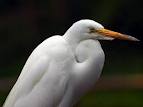
Birds are vertebrates of the class Aves and are unique in having feathers, the one major characteristic that distinguishes them from all other animals. Birds also have beaks and forelimbs modified into wings. Most birds are able to fly, but some, like ostriches and penguins, cannot even though they still have wings.
Like mammals, birds are warm-blooded and have a four-chambered heart. All birds reproduce by laying eggs with hard shells, and most birds build nests to protect the eggs from weather and predators. Adult birds almost always sit on the eggs to keep them warm until they hatch. Birds can be found in all habitats above ground, and there are even some species that make nests in underground burrows. Visit the Philadelphia Zoo's colorful birds in Bird Valley and throughout the zoo.
To put it simply, birds are amazing animals. The colors alone seal the deal on our fascination. We have feathers to thank for all that beauty and so many gorgeous hues. Feathers not only help insulate and protect the bird’s skin, provide the smooth surface necessary for flight, and show-case colors and patterns important to camouflage and social behavior, but are a marvel of the natural world, the most prominently recognized feature of a bird’s anatomy, and unique to birds alone.

Through a short series of blogs, I hope to show you just how impressive they are, from structure, to shape, color, strength and function. I will be starting from the skin up, describing how birds grow feathers, and what patterns feather growth takes right below the skin.
Until then, I’ll leave you with these amazing feather facts to consider:
The feathers of a bird commonly weigh only 5 to 10 % of a bird’s weight. This is still usually 2 to 3 times heavier than the bird’s bones.
The world’s smallest feathers are from the eyelids of the Bee Hummingbird–1/63 of an inch, while a peacock’s tail feathers are 5 feet long.



No Comment.